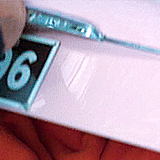Difference between revisions of "User:MarjoleinStassen"
Jump to navigation
Jump to search
| (26 intermediate revisions by 2 users not shown) | |||
| Line 1: | Line 1: | ||
| − | + | [[File:hello.gif]] | |
| − | [[File: | ||
| − | |||
| − | |||
| − | + | = Projects = | |
| − | + | * Quarter 7 - [[/MIC | MAKING IS CONNECTING]] | |
| − | + | * Quarter 8 - [[/MMM | MIMICKING MACHINES]] | |
| − | + | * Quarter 9 - [[/UTC | UNRAVEL THE CODE]] | |
| − | + | * Quarter 10 - [[/MB | CERAMIC MEMORY]] | |
| − | + | * Minor - [[/RADIATION | RADIATION]] | |
| − | |||
| − | |||
| − | |||
| − | |||
| − | |||
| − | |||
| − | *[[/ | ||
| − | *[[/ | ||
| − | * | ||
| − | |||
| − | *[[/ | ||
| − | * | ||
| − | |||
| − | |||
| − | |||
| − | |||
| − | |||
| − | |||
| − | |||
| − | |||
| − | |||
| − | |||
| − | |||
| − | |||
| − | |||
| − | |||
| − | |||
| − | |||
| − | |||
| − | |||
| − | |||
| − | |||
| − | |||
| − | |||
| − | |||
| − | |||
| − | |||
| − | |||
| − | |||
| − | |||
| − | |||
| − | |||
| − | |||
| − | |||
| − | |||
| − | |||
| − | |||
| − | |||
| − | |||
| − | |||
| − | |||
| − | |||
| − | |||
| − | |||
| − | |||
| − | |||
| − | |||
| − | |||
| − | |||
| − | |||
| − | |||
| − | |||
| − | |||
| − | |||
| − | |||
| − | |||
| − | |||
| − | |||
| − | |||
| − | |||
| − | |||
| − | |||
| − | |||
| − | |||
| − | |||
| − | |||
| − | |||
| − | |||
| − | [[ | ||
| − | |||
| − | |||
| − | |||
| − | |||
| − | |||
| − | |||
| − | |||
| − | |||
| − | |||
| − | |||
| − | |||
| − | |||
| − | |||
| − | |||
| − | |||
| − | |||
| − | |||
| − | |||
| − | |||
| − | |||
| − | |||
| − | |||
Latest revision as of 11:39, 31 August 2016
Projects
- Quarter 7 - MAKING IS CONNECTING
- Quarter 8 - MIMICKING MACHINES
- Quarter 9 - UNRAVEL THE CODE
- Quarter 10 - CERAMIC MEMORY
- Minor - RADIATION
